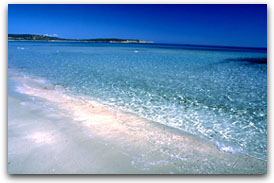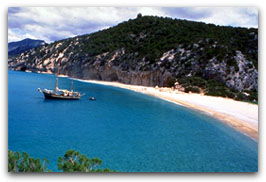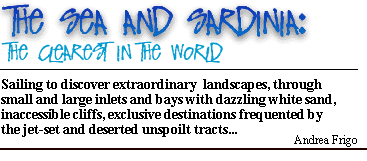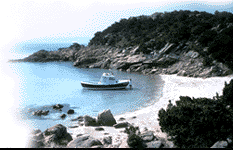 |
|
Situated in the middle of the
Mediterranean Sea, Sardinia with its app. 1.800 kilometres of coastline, is one of the most
popular destinations for people who love aquatic sports and seaside holidays, not only for its
natural beauty and geographical position but also for its history.
The many waves of invaders who plundered and settled in Sardinia during the thousands of
years of Sardinian history, came from the sea.
|
For this reason the Sardinians,
until recently, have never loved the sea and they built very few villages along the coast. The
most important villages were built during the period of the Roman domination and before that
under the Phoenician-Punic domination. Some examples are: Karalis (Cagliari, the capital of
Sardinia), Nora, Tharros, Olbia and Turris Libissonis (Porto Torres) on the Northern coast of
Sardinia.
|
|
 |
During the last years of this 2nd
millennium, the importance of both the sea and the coast has increased. This is due in part to
the relatively recent discovery of tourism, which started at the end of the 1950's, and in part to
the development of certain parts of the economy connected to the sea such as fishing and
transport.
|
 |
|
It is neither a coincidence nor a
fashion that nowadays Sardinia is the preferred destination for many tourists. The sea around
this large Mediterranean Island (second only to Sicily in size among all Mediterranean
Islands) is among the most beautiful and transparent in all the world. In fact D.H. Lawrence in
his famous book 'The Sea and Sardinia' wrote that Sardinia was a land like no other and the
Sardinian writer, Marcello Serra entitled one of his famous books "Sardinia: Almost a
Continent", in order to underline the uniqueness of the Sardinian landscapes and the large and
deep differences among the Island's various regions which make Sardinia similar to a
continent.
|
|



